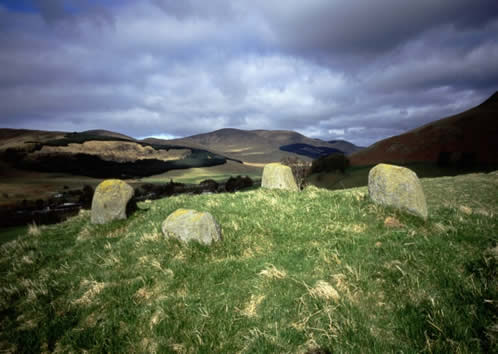In Scotland and Ireland, as a result of different walking traditions, relatively few long distance routes have been developed, though the numbers are increasing. This does not mirror the tremendous walking opportunities to be found, but rather a reluctance to emphasise particular routes through true wilderness areas. This LDPs website covers the UK and so includes LDPs in Scotland and Northern Ireland - to find these routes please use Search for Path and select the relevant area.
With the growing network of marked promoted LDPs in Scotland, Scottish Natural Heritage, the body that oversees and recognises the 'national routes' in Scotland has defined a new class of routes called 'Scotland's Great Trails' (SGTs), recognising the growing role of marked and promoted trails in Scotland as its LDPs network extends to complement its peak-bagging opportunities for walking tourists. These are nationally promoted trails, distinctively waymarked, largely off-road and with a range of visitor services. At least 25 miles in length, they are suitable for multi-day outings as well as day trips. Collectively there are in 2017 29 different routes providing over 1800 miles of managed paths from the Borders to the Highlands, offering great opportunities to explore the best of Scotland's nature and landscapes and to experience its amazing history and culture. Of these trails, 28 are walkable - one is a canoe trail - some of which are multi-user routes shared with cyclists and some with horse-riders. A list of the 29 routes, further details and a downloadable SGTs network map are available at the SGT's relaunched website here. The SGT's revised 'thistle in hexagon' waymark (logo) is also shown on the SGT website.
Formerly Scotland had only four 'national routes' recognised by SNH, termed 'Long Distance Routes', comprising the Great Glen Way, Southern Upland Way, West Highland Way and Speyside Way. These routes are now included within the 29 current SGTs. These changes recognise the increasing significance of promoted walking routes in Scotland, complementing its peak-bagging traditions embodied in the Munros and attracting many more walking tourists to sample Scotland's many wild and varied landscapes. They include source-to-sea routes, coastal routes, historical trails, and mountains and lochs routes.
These trails are now also listed and identified here on the LDWA LDPs website, with summaries and outline mapping. For an overview map use the Search for Path option and select in the Path Type dropdown, 'Scotland's Great Trails' and 'Show Map' (there is also a 'list' option). (These routes are also tagged with Attribute of Scotland's Great Trails.) The SGT's own website was launched in 2017 as the definitive source for these trails.
In Scotland there is a fine network of hill paths that can be combined into all manner of other long distance expeditions. Scottish Hill Tracks describes some 350 routes across hills and moors and through glens and passes, in all areas from the Cheviots to the Highlands. Its map of Scotland graphically illustrates the wealth of long-distance cross-country walks across the hills and moors. The Scottish Rights of Way and Access Society has been working to safeguard rights of way for 160 years. It is probably the oldest organisation in the world dedicated to improving countryside access. Its objects are the preservation, defence, restoration and acquisition of public rights of access for the public benefit over land in Scotland, including public rights of way. It deals with enquiries about problems with particular rights of way and other access matters. It records all the known rights of way in Scotland and many other routes and in partnership with Scottish Natural Heritage maintains the National Catalogue of Rights of Way. It is an acknowledged expert on rights of way law and publishes books and leaflets on the subject.

In the Republic of Ireland, which is outside the scope of this website to cover in detail, an increasing number of walking routes are being developed, with route guides and waymarking. There are 31 National Waymarked Ways, offering walkers approximately 3,000 km of marked walking routes throughout Ireland. Waymarked Ways of Ireland (enquiry form online) gives an overview of these routes, a searchable map and details of each route in sections.
Route guides and maps, including digital maps, are available from EastWest Mapping (00 353 53 9377835 and e-mail: eastwest@eircom.net). Ordnance Survey Ireland provides maps for tourist and leisure activities. Full coverage is available at a scale of 1:50000 and some walking areas at 1:25000.
Visitor information is available from the Irish Tourist Board (online search and enquiry form; telephone enquiries handled regionally).
The Irish Youth Hostel Association (YHA Ireland) has 26 youth hostels located throughout Ireland. (00 353 1 830 4555 and mailbox@anoige.ie).
Some independent hostels are listed online: see Accommodation & Visitor Information. The publication ‘Ireland: All the Hostels’ contained information on over 400 Independent and Hostelling International Hostels in Ireland, with descriptions of 200 of the hostels in Ireland. It was available from: Ireland All The Hostels, Flat 2A, 72 Woodstock Road, Moseley, Birmingham B13 9BN, UK.